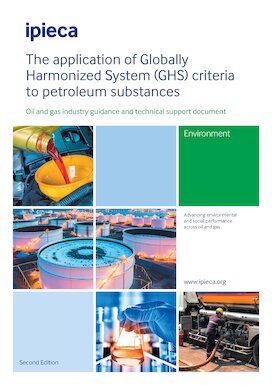The updated 2019 Ipieca GHS guidance includes a detailed discussion of a "weight of evidence" (WoE) approach and presents a stepwise path to determining the best data to be used for classification decisions. An updated classification flowchart utilizes a three-tiered approach in which substance-specific toxicity data are considered first, followed by read-across data and then data for hazardous constituents.
Given the expanding international market in chemical substances and mixtures, a global system of classification and labelling was proposed at the 1992 Earth Summit by the International Labour Organization (ILO), the Organisation for Economic Co-operation and Development (OECD) and many other governments and stakeholders. In response, the United Nations developed the 'Globally Harmonised System' (GHS) which is a single worldwide system for classifying and communicating the hazardous properties of industrial and consumer substances and mixtures.
The oil and gas industry, represented by Ipieca, was the first sector to present guidance on its products to the UN Sub-Committee of Experts on GHS (UNSCEGHS) in 2010. The guidance document, The application of Globally Harmonized System (GHS) criteria to petroleum substances, has now been revised to include new research on the hazards of petroleum-related substances and constituents.




